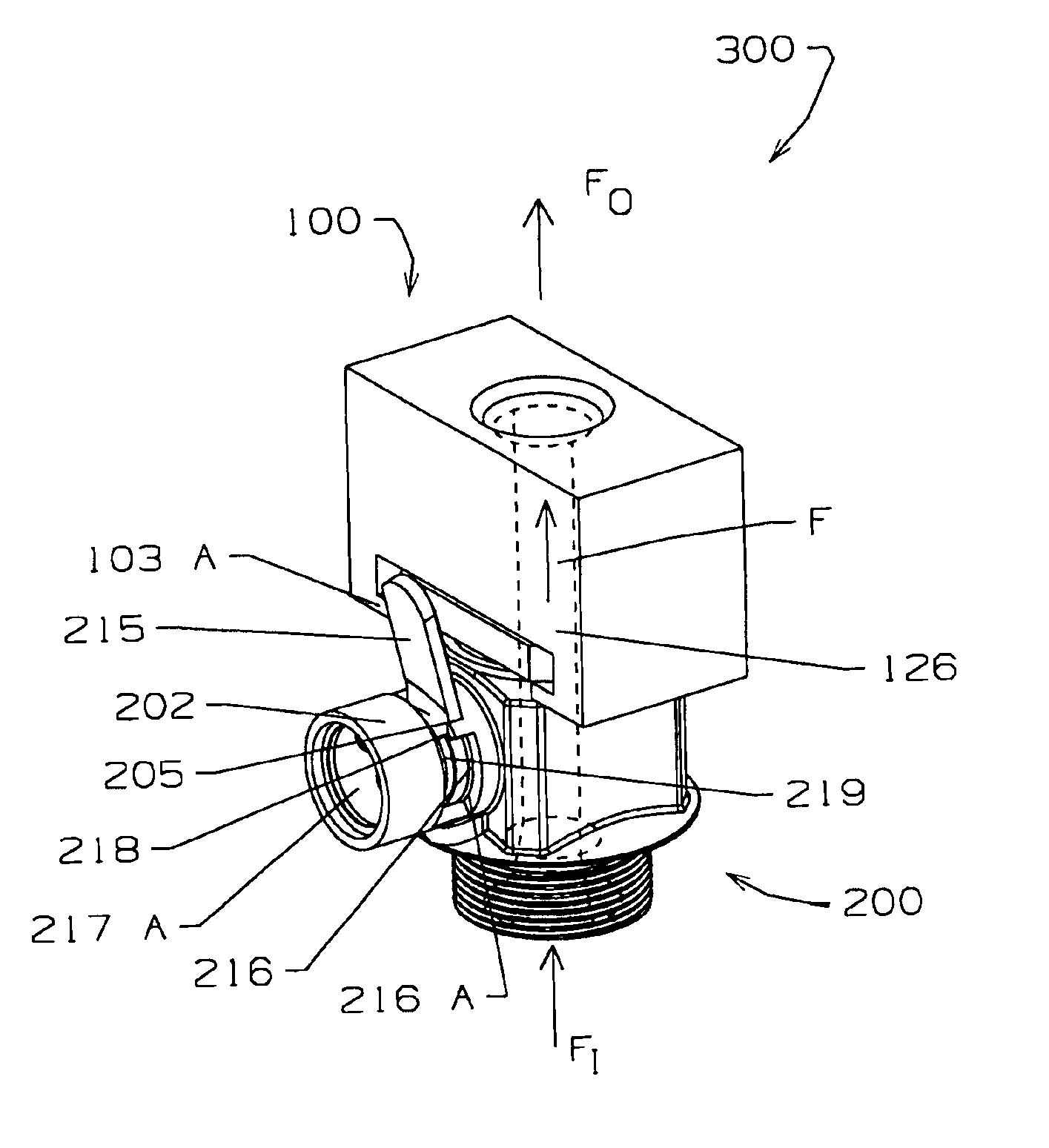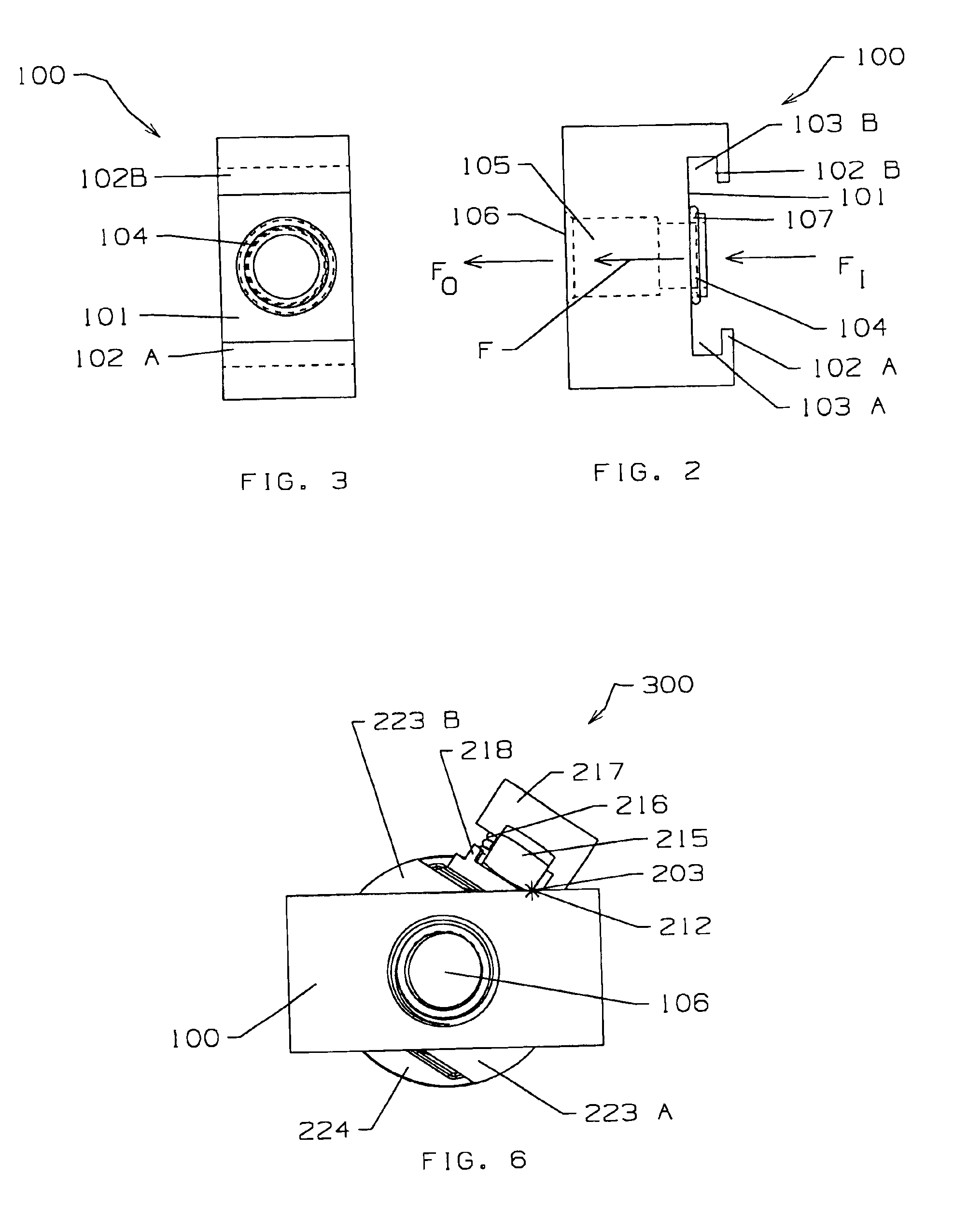Flowable-material transfer device and system
a technology of material transfer and flowable material, which is applied in the direction of water supply installation, transportation and packaging, couplings, etc., can solve the problems of failure of the material transfer system, heightened risk of the transfer act, and high risk of the material being transferred, so as to achieve convenient and fast operation, secure, safe, and simple
- Summary
- Abstract
- Description
- Claims
- Application Information
AI Technical Summary
Benefits of technology
Problems solved by technology
Method used
Image
Examples
Embodiment Construction
FIG. 1 is a perspective view of a connector device 300 according to the invention. The connector device 300 comprises a transfer-apparatus connector 100 and a source-container connector 200 that mate to form a leak-tight seal and to provide a flowpath F for flowable material through the connector device 300. In FIG. 1, the transfer-apparatus connector 100 is shown in close proximity to and ready to be mated to the source-container connector 200. When the connector device 300 is installed for operation, the flowpath F through the connector device 300 is generally in the direction of an inflow FI toward an outflow FO, as indicated by the respective arrows. Hereinafter the arrows inflow FI and outflow FO shall be used to designate the inflow and outflow sides of all components of the connector device 300.
FIGS. 2 and 3 illustrate the transfer-apparatus connector 100 of the connector device 300 of the present invention. The transfer-apparatus connector 100 has an inflow side and an outfl...
PUM
 Login to View More
Login to View More Abstract
Description
Claims
Application Information
 Login to View More
Login to View More - R&D
- Intellectual Property
- Life Sciences
- Materials
- Tech Scout
- Unparalleled Data Quality
- Higher Quality Content
- 60% Fewer Hallucinations
Browse by: Latest US Patents, China's latest patents, Technical Efficacy Thesaurus, Application Domain, Technology Topic, Popular Technical Reports.
© 2025 PatSnap. All rights reserved.Legal|Privacy policy|Modern Slavery Act Transparency Statement|Sitemap|About US| Contact US: help@patsnap.com



